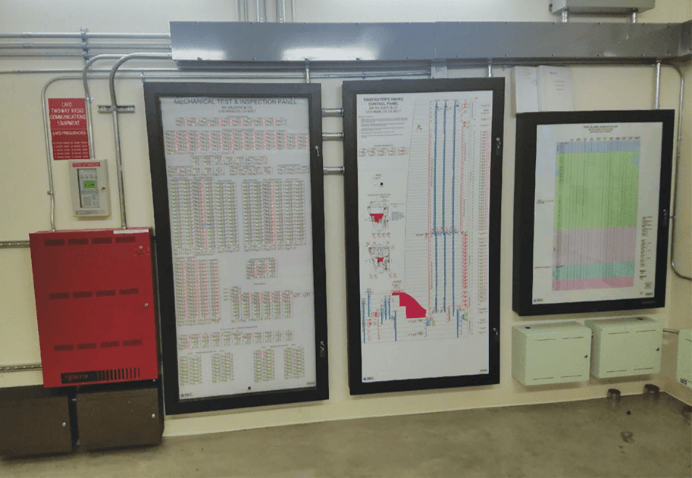Installing a fire alarm system in the tallest building west of the Mississippi River is no easy task. However, Rick Taylor and his team from Building Electronic Controls Inc. (BEC), Glendora, Calif., were up to the task.
In 1995, BEC was formed as a specialty electrical contractor and an Edwards engineered systems distributor. Today, it provides fire detection systems for commercial buildings, and it is a leading fire, life safety, security and network infrastructure company in the greater Los Angeles area. The Wilshire Grand is BEC’s largest single property.
Owner Korean Airlines and architect AC Martin wanted to break the tradition in Los Angeles for flat-top buildings, even though an emergency helicopter landing pad is required to obtain Los Angeles Fire Department (LAFD) approval. While the Wilshire Grand has a tactical landing pad, it does not define the shape feature of the top of the building. To build the building without the approved emergency landing pad, the owner and the architect submitted a comprehensive modification request to the LAFD, creating special conditions that affected the life-safety system.
AC Martin agreed to provide an enhanced design approach, including full-area smoke detector coverage and a designated firefighter’s emergency elevator with a dedicated camera-viewing system in each lobby.
The building met all of the LAFD requirements. The company designed, furnished and installed the fire alarm, emergency voice evacuation and smoke control systems. All three systems integrated into one Edwards EST3 platform.
BEC worked as a subcontractor to San Jose, Calif.-based Rosendin Electric, which furnished all raceways. BEC installed the wire, making all terminations and performing all programming.
At the time of the temporary certificate of occupancy (TCO), the integrated life safety system had more than 9,000 active addressable points with 3,500 smoke detectors to support the smoke control system, automatic sprinkler system monitoring, manual pull stations, and firefighters’ two-way communication, plus other emergency systems monitoring.

By the end of construction, the building had more than 5,000 area smoke detectors with several large areas protected by aspirating-type smoke detection (ASD) systems. ASD systems, rather than linear projected beam-type smoke detectors, fully protect large, high, open atrium areas. Elevator shafts that required smoke detection, and did not have access at the top of the shafts, have small single-unit ASD systems. Because no elevator machine room or shafts have automatic sprinkler protection, the fire alarm system design did not include elevator shunt trip operations.
A collaborative design effort between BEC and mechanical contractor ACCO created the smoke control system. They based this design on a rational analysis prepared by Exponent.
The smoke-control system has a unique design that provides five separate systems with different design objectives. The restaurant, lounge and club areas serving the top five floors, which share an open atrium, use one design. The hotel floors and office levels each have separate designs. Levels 1–7 share a common open atrium with an exhaust system. Finally, the five parking levels have a defined air change design separated into two zones by rolldown doors at mid-level.
One common element of the smoke control system design incorporates the main pressurized stairs that span the total height of the building.
In addition to a smoke-control graphical display (SCGP), the LAFD and the Los Angeles Department of Building and Safety (LADBS) required the installation of a unique, separate mechanical test panel (MTP) with per-zone activation switches and LED indicators. This panel displays every individual element of the smoke control system with individual manual activation switches to assist in initial testing, automatic weekly testing, annual inspections, and fire department control operations during a fire in the building. Designers were challenged to fit all of this information into individual SCGP and MTP panels given the height of the building and the large number of fans and dampers. BEC designed these panels in collaboration with H.R. Kirkland.
Read the FULL article online here.
More information on Building Electronic Controls Inc. (BEC) here.


